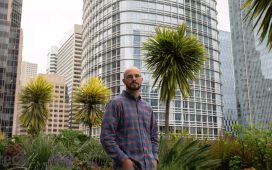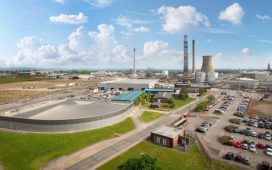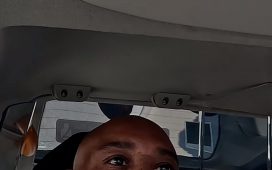What started out as a trading venture focused on digital assets grew into a sprawling crypto empire. (More than 100 entities were included when FTX filed for bankruptcy.) At its heart there were two organizations that mattered most: Alameda Research, a arbitrage trading business that Bankman-Fried co-founded in 2017, and FTX Trading Ltd., a crypto exchange based in the Bahamas and founded in 2019. All told, he raised more than $1.8 billion from equity investors, the SEC said, and FTX’s subsequent bankruptcy estate has recovered around $7 billion in assets to date.
2. How did FTX get so big?
Alameda initially made profits by applying traditional techniques of arbitrage to the Bitcoin market. Bankman-Fried and co-founder Gary Wang found ways to buy the world’s biggest cryptocurrency on Asian exchanges where it was selling for slightly less, and sell it on exchanges where it fetched slightly more, pocketing the difference. Bankman-Fried had previously been a trader at Jane Street, a mainstream hedge fund. When he founded FTX, he promoted it as a trading platform for sophisticated investors and touted its automated risk-management engine to Congress as superior to those used by traditional market makers. At its peak in early 2022, FTX was valued at $32 billion by its equity investors.
3. How did FTX get into trouble?
According to the SEC, Bankman-Fried had “from the start” improperly diverted assets that customers had deposited with FTX for use by Alameda to fund its trading positions and venture investments, as well as personally make “lavish real estate purchases and large political donations.” As the broader crypto market declined in value through 2022, other lenders began to seek repayment from Alameda. Even though FTX had allegedly already given Alameda billions of dollars in customer funds, Bankman-Fried began to give Alameda even more money to cover those positions, the SEC alleged.
4. What led to FTX’s collapse?
FTX issued its own token known as FTT. Alameda began using FTT, along with tokens issued by entities that FTX either owned or invested in, as collateral for its borrowing activities — while also using FTX customer funds to trade with. But like most crypto tokens, FTT isn’t backed by substantial reserves of assets. That meant its value was tied closely to the fortunes of FTX itself, making it worthless as collateral if FTX or Alameda ran into trouble and urgently needed funds. When questions were raised about FTT by the chief executive of rival exchange Binance, weak oversight and risk management at FTX compounded the problem. As clients began to withdraw funds from FTX, it didn’t know where all its pots of money were or how much of its assets it could liquidate in a hurry, and so struggled to honor requests. Panicked customers dashed for the exits.
5. What did Bankman-Fried say?
He’s argued that FTX’s funding problems were limited to FTX International Ltd., the larger entity that grouped its businesses outside of the US including Alameda and about 100 other units. When the extent of the collapse became clear, Bankman-Fried also blamed himself for what he said was a series of accounting errors caused by poor risk management. He said Alameda’s investments had been hit hard by the broader crypto meltdown, and that when FTX called in loans it had extended to Alameda, the trading outfit couldn’t meet those requests. He claimed to be unaware that Alameda was so heavily exposed to FTX. The 31-year-old pleaded not guilty to all charges against him in August, including fraud and money laundering.
6. What’s the case against Bankman-Fried?
According to SEC Chair Gary Gensler, Bankman-Fried built a “house of cards on a foundation of deception while telling investors that it was one of the safest buildings in crypto.” FTX’s own terms of service stated that ownership of assets deposited on its platform remained with customers, so it was not allowed to use them elsewhere in the group as collateral to raise funds for other investments — particularly as FTX was not a regulated bank. Additionally, as the majority owner of Alameda, Bankman-Fried may have had more insight into the state of its affairs than he is letting on. The SEC said Bankman-Fried hid the extent of the ties between the two entities from investors, and personally directed that FTX’s “risk engine” should not be applied to Alameda. This in effect amounted to what the SEC called an unlimited line of credit funded by FTX customers.
7. Who else was charged along with SBF?
Several co-founders and senior executives from FTX and Alameda were instrumental in charges being brought against Bankman-Fried, despite the hot water they also found themselves in as a result. Wang, alongside former Alameda CEO Caroline Ellison, were among those who turned on Bankman-Fried almost immediately following his company’s collapse, agreeing to cooperate with federal prosecutors and pleading guilty to a raft of charges. Former FTX engineering chief Nishad Singh followed suit a few months later. And as the date for Bankman-Fried’s trial neared, Ryan Salame, who co-led FTX’s business in the Bahamas, similarly pleaded guilty.
7. What’s Bankman-Fried been doing since he was charged?
After his arrest in the Bahamas, Bankman-Fried was allowed to await his trial under house arrest, living with his parents in their Palo Alto, California home. That was until a judge revoked his $250 million bail in August, suspecting he had tried to tamper with two witnesses. Bankman-Fried is now trying to build a defense from the confines of Brooklyn’s infamous Metropolitan Detention Center. Lawyers for the vegan entrepreneur say he’s been surviving on a diet of bread, water and a little peanut butter, with no access to prescription medication like Adderall. A request by Bankman-Fried’s team to have him released from prison five days a week so he could work on his case was denied.
8. What specific charges does Bankman-Fried face?
Bankman-Fried was initially charged in a Manhattan court with 13 counts overall, including conspiracy and wire fraud. He contested the validity of five of the 13 counts in an earlier indictment, arguing they weren’t part of the extradition pact that paved the way for his return to the US in December. In August, the government severed those five charges from the trial, pushing them to a second trial at a later date, and dropped an accusation that he violated campaign finance laws. Bankman-Fried will now face seven counts of fraud and money laundering in October.
–With assistance from Ava Benny-Morrison.
More stories like this are available on bloomberg.com





